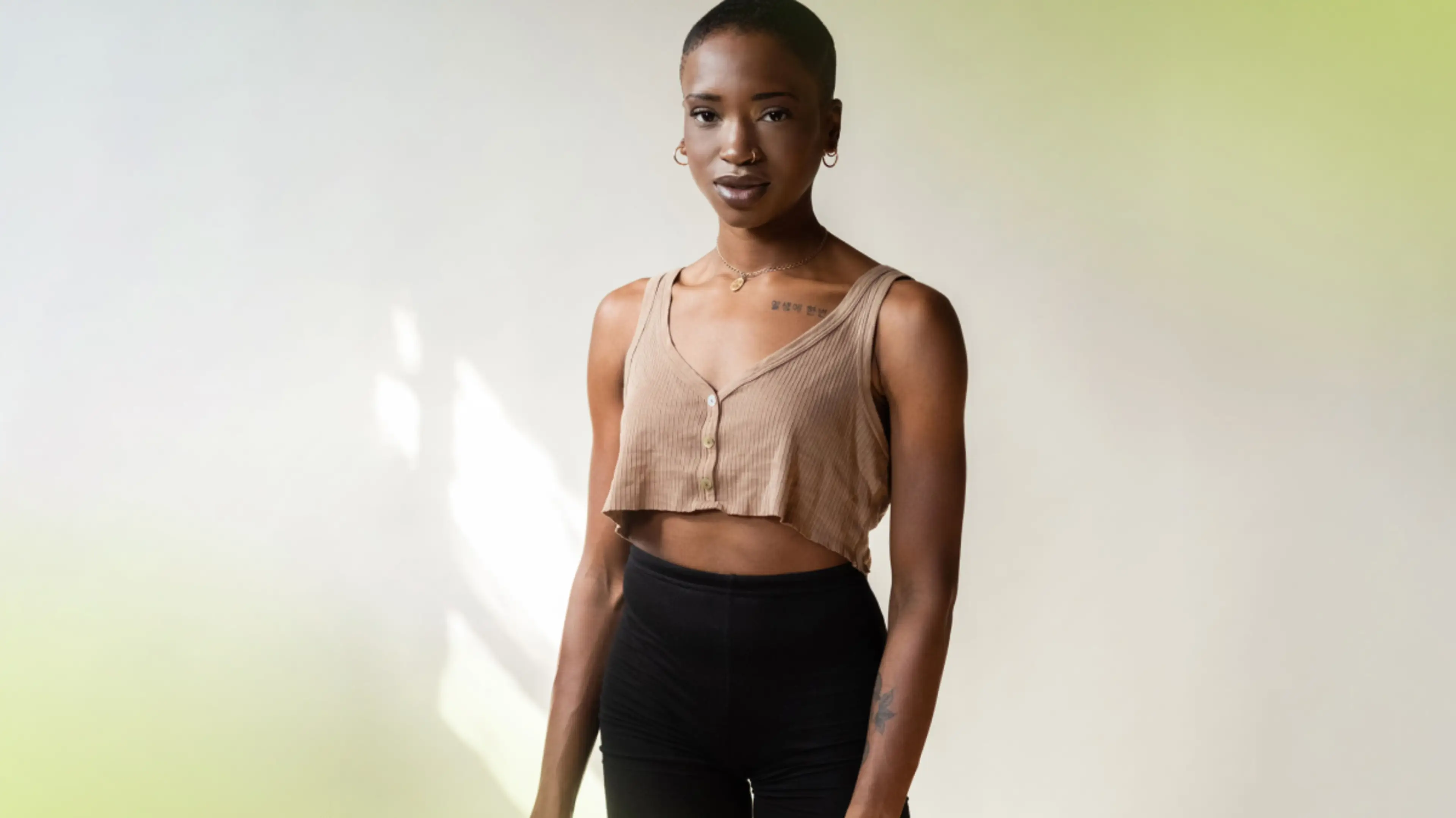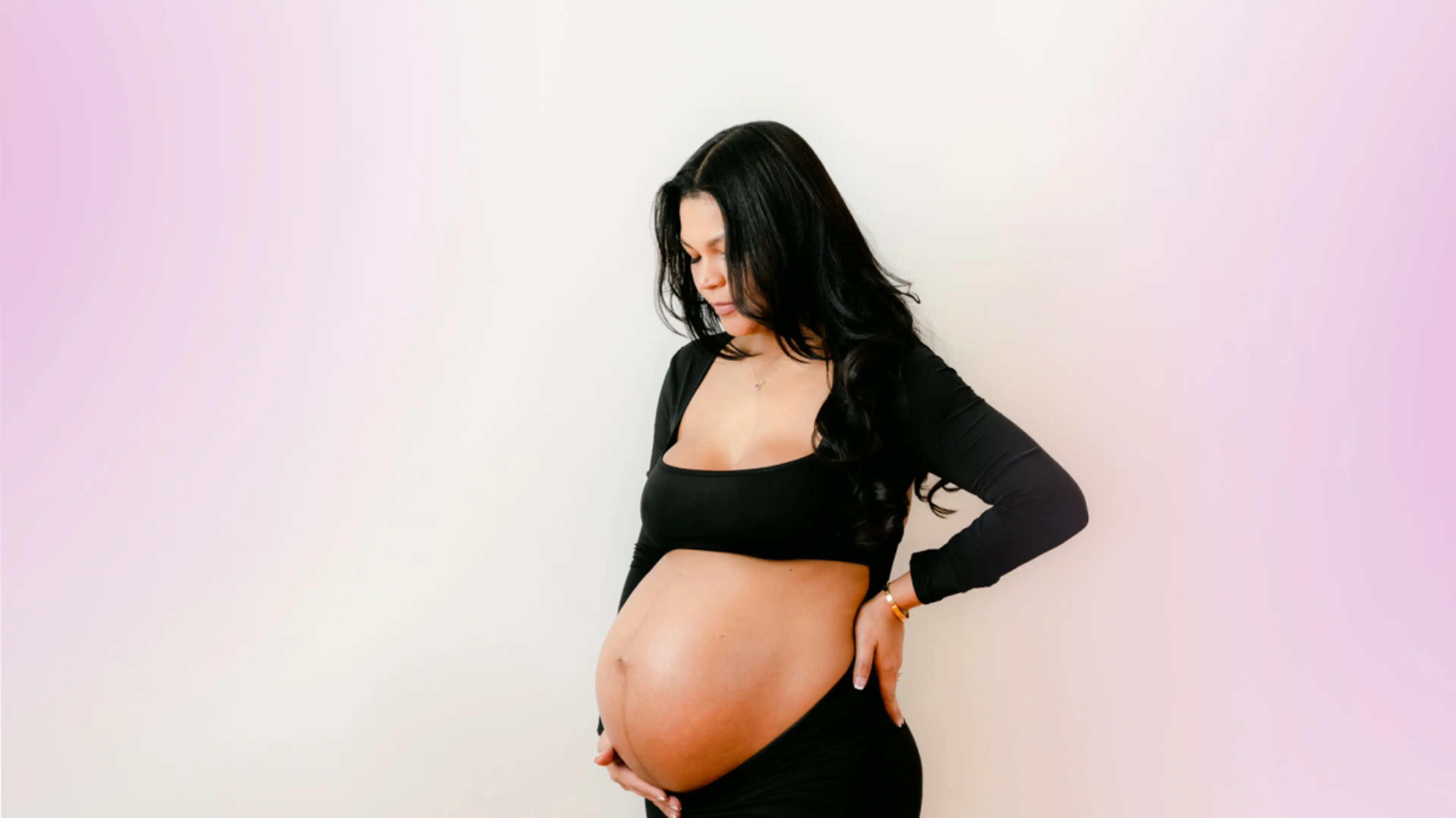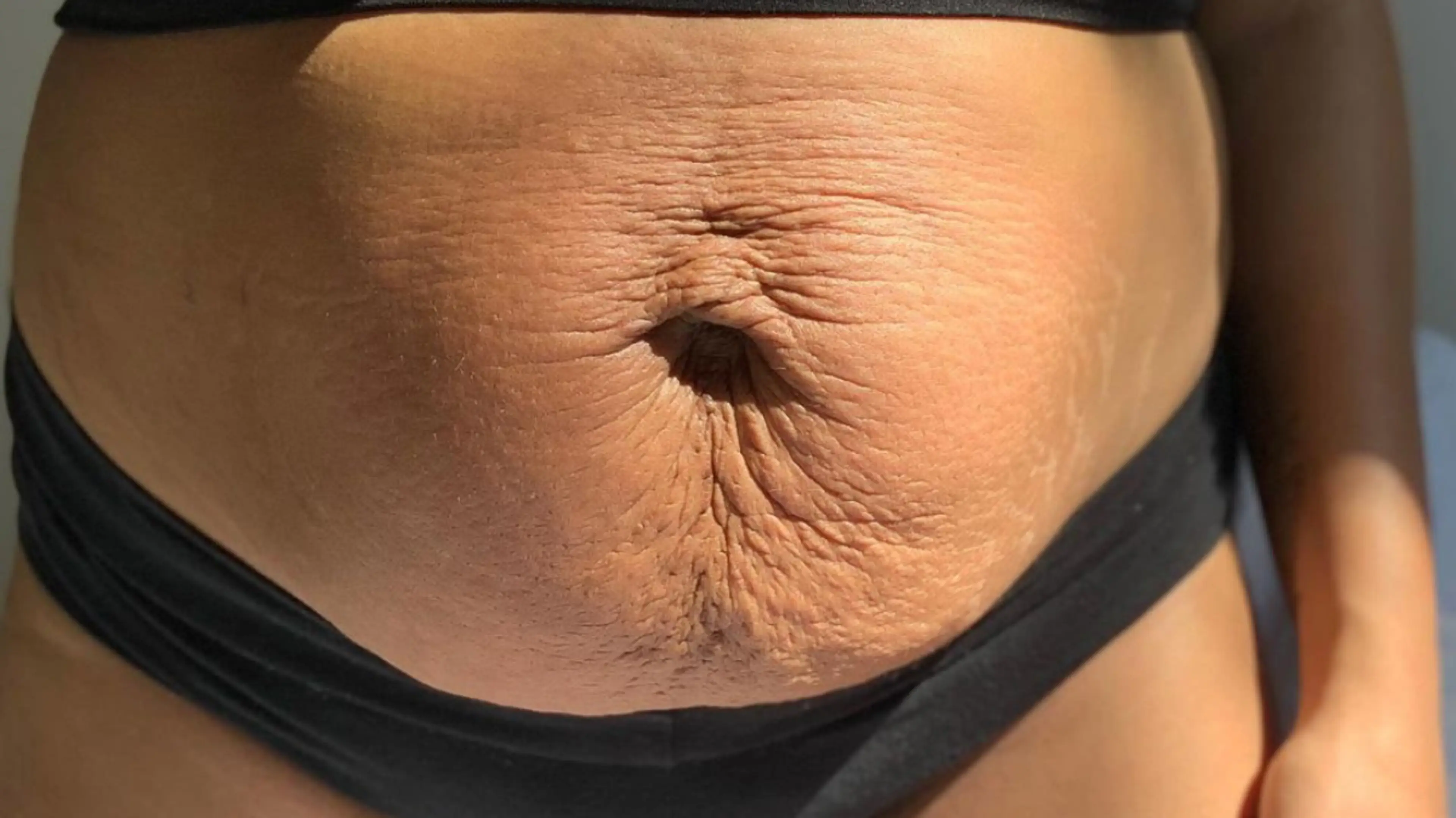Before you got pregnant, you probably had an understanding with your boobs. As your constant companions since those awkward puberty days, you more or less knew what to expect from them.
Then the pregnancy breast changes hit, and it’s like you have no idea who they are anymore. For the lifelong itty bitty crowd, the bump up in bust can be exhilarating. Or maybe you rarely thought about your chest, so the changes are no big deal. Then there's the larger-chest club, or those who’ve had a fraught relationship with their boobs since middle school (hi, it’s me) and are worried about how things will look during and after this full-body transformation.
“Many women experience breast changes early in their first trimester that continue throughout the postpartum period,“ says Dr. Kenosha Gleaton, an ob-gyn and medical advisor at Natalist, and it’s true that some changes may stick around for good. “[Your breasts] may not be exactly how they were pre-pregnancy, but all of these changes are normal.”
Like fleshy crystal balls, your boobs offer insights into what is happening in your body during each trimester and beyond. (Case in point, breast soreness was probably the first giveaway that you were even pregnant.) So, no matter how you feel about all this change, it’s not a bad idea to pay attention to your chest to ensure nothing takes you by surprise (looking at you, darker nipples). Here's what you need to know to stay abreast of this ever-changing situation.
First Trimester Breast Changes
Ah, the first trimester. Giver of extreme nausea, weird twinges of pain, and generally just feeling bleh. Why not pile on sore boobs and other appearance-related changes to the list? Even just one to two weeks after conception, you might notice breast changes, according to the National Institutes of Health1 , and it’s all in preparation for your body to breastfeed (if you choose) when the time comes.
Breast tenderness
The influx of pregnancy hormones in your first trimester has a big effect on your boobs. Namely, it causes the breast tenderness that most people experience, says Dr. Myra Wick, a specialist in the department of obstetrics and gynecology at the Mayo Clinic and author of the book Mayo Clinic Guide to a Healthy Pregnancy, 3rd Edition: Evidence-Based Insight and Real-Life Tips for Expecting Parents2 . The hormones cause your breast tissue to swell, while at the same time, the blood volume in your body is increasing—as much as 30 percent—which can also cause soreness, she says.
Maria Carola, 52, recalls this feeling quite vividly. “I remember very early on feeling this breast tenderness that was almost like I was getting my period, and this was before I had even taken a pregnancy test,” she says.
Bigger boobs
Then there’s the size difference, with some people growing an entire cup size in the first trimester alone (and this growth may continue throughout pregnancy and postpartum). This happens for a couple of reasons. One, all of that extra blood and swelling can translate to your boobs just getting bigger. Two, the milk ducts and mammary glands are growing in preparation for breastfeeding. Add it all up, and your breasts might weigh upwards of two pounds by the time you give birth, according to the March of Dimes3 .
For Jess Harstock, 35, the boost in her bust was a welcome change during pregnancy. “I have always been very small-chested,” she says. “Finally, for the first time in my life I felt excited to have breasts and really look like a woman.”
More prominent veins
Another side effect of that increased blood flow? More visible veins in your breasts. While this may look a bit alarming, rest assured, your body is brimming with blood to bring important nutrients4 to your body and the fetus.
Second Trimester Breast Changes
By now you’re probably used to the soreness and a bigger set of boobs. What you may not be expecting is a complete makeover of your areolas during this time.
Darker, larger areolas
You’re not imagining things—your nipples and areolas may get darker in color and bigger in size, says Dr. Wick, which is due to the high levels of progesterone in the body. For Briana Engelbrecht, 31, the skin discoloration didn’t stop there. She noticed melasma, or patches of dark skin all over her breasts, not just her areolas. “My entire boob got darker and splotchy,” she says, which eventually faded away, and then returned again with her second pregnancy.
New bumps
Around this time, you might also notice new bumps on your areolas, says Dr. Gleaton, or they may increase in number or change in size and color. These actually have a name, Montgomery glands, and they serve a purpose. Ranging in appearance from flesh-colored to white or red, these glands secrete oils to lubricate and protect the skin. “Research shows that the sebum released actually has a scent that helps infants locate the breast and initiate breastfeeding,” she says.
Leaking fluid
If you see a thick, yellow-ish white discharge coming from your nipples, don’t be alarmed. This is colostrum, a nutrient-dense, protein-filled precursor to breast milk, that is full of immunoglobulin that helps support your baby’s immune system soon after birth, says Dr. Gleaton. “Leaking may be more obvious to some, or could even appear as dried colostrum on the nipple, but this doesn’t happen to everyone,” she says.
Third Trimester Breast Changes
By the time you hit the third trimester, you’re probably wondering just how much bigger everything can get. Thankfully, breast growth during pregnancy often peaks during this time, says Dr. Gleaton, though they may start to increase in size again if you breastfeed.
Heavier breasts
As estrogen and progesterone continue their home renovation project in your breasts, you might notice that all that extra mammary tissue growth makes your boobs feel weighed down. “This can make it feel like your bra is tighter or your chest is heavier, and can steadily increase throughout pregnancy as estrogen levels continue to rise and peak in the third trimester,” says Dr. Gleaton.
Stretch marks
Take a deep breath, stretch marks are just a part of pregnancy. The degree to which your stretch marks are noticeable really depends on two factors: genetics5 and the stress put on your skin. As your boobs rapidly grow, it means the skin stretches, which is what causes those marks to appear. Don’t worry, these will fade with time, maybe even to the point that you don’t notice them anymore.
Read Next: We Need to Talk About Postpartum Body Changes
Postpartum Breast Changes
If you thought your breast changes were over after giving birth, welcome to the second round of my-boobs-are-blowing-up-like-balloons. Whether you decide to breastfeed or not, your boobs will still prepare as though you are, and that means they may get even larger for a time.
Engorgement from milk
“You’ll often start to feel a difference in your breast growth and tenderness as your breasts become engorged with milk during your postpartum period, which can cause soreness and pressure in the breast tissue,” says Dr. Gleaton. If you breastfeed or pump, you will feel some relief as you express the milk. If you don’t, it may take up to several weeks6 of uncomfortable tightness or tenderness before your body gets the hint that you don’t need to produce milk.
As someone who already had large breasts before pregnancy, the constant one-upping in cup size came to a head for Engelbrecht when her breasts were engorged. “Once my milk came in, I was actually scared, because they were so huge, and hard, and sore,” she says. “I was like, ‘How am I going to get the milk out of here?’”
Nipple sensitivity
It’s also common for heightened hormones to cause nipple sensitivity during this time, says Dr. Gleaton, and it can continue for several months after giving birth. While the physical sensation can be uncomfortable, it can also become a bigger mental health issue. When Engelbrecht was still nursing her first child, she became pregnant with her second. She thinks severe nipple sensitivity may have triggered an intense breastfeeding aversion with her first, which caused her to wean immediately. “My milk was drying up, so I was basically dry nursing, and I just couldn’t do it,” she says. This feeling has also carried over into other aspects of her life, including intimacy. “Any touching that wasn’t feeding related was an instant no way,” she says.
That aversion has stuck around, even now, she says, but it also goes back to a societal issue. Girls and women, especially those with larger chests, grow up feeling like their breasts are sexualized. When you have a baby, your boobs suddenly shift to being seen as only for utility and feeding your baby. “Then when you’re done breastfeeding, they go back to being sexual, and I don’t ever want to go back,” says Engelbrecht.
If You Are Pumping or Breastfeeding
Breastfeeding can be wonderful—but it can also be hard, and sometimes painful. Pumping can also be an exhausting experience for many moms. Despite that, many people push through those challenges to continue the breastfeeding/pumping journey (and it typically gets easier with time and practice). That said, there are a few extra breast changes that can occur.
Painful issues
Breastfeeding and pumping can both contribute to sore and cracked nipples, which can be pretty painful, says Dr. Gleaton, but nipple balms that moisturize the area are safe to use while breastfeeding. You’ll also want to watch out for symptoms of clogged milk ducts or even mastitis, when a clogged duct becomes infected, she says. Mastitis symptoms can include pain, redness, swelling, and warmth, and in severe cases, flu-like symptoms. It’s best to see your healthcare provider if you experience any of those symptoms. Harstock dealt with mastitis twice, which she says was “very painful and challenging.”
Lumpy or lopsided breasts
“If you are breastfeeding, it’s normal for your breasts to feel lumpy as your milk glands are growing, but it can feel uncomfortable,” says Dr. Gleaton. Massaging the lumps can help to release the milk in those ducts for some relief.
As Harstock was breastfeeding, one boob became her baby’s go-to, which caused her breasts to look lopsided, as one was producing much more breastmilk. At first, she says this made her self-conscious, but quickly realized it wasn’t worth the worry. “The truth is, nobody but you is really paying attention to that,” she says.
Living With Your New Breasts
Whether you wean after two months or two years, or you never breastfeed or pump, your boobs may not be exactly the same. Generally, says Dr. Wick, your breasts will shrink back down to around their pre-pregnancy size. And, after you’re done breastfeeding, the changes you saw in your nipples and areolas will also largely go back to the way they looked before you started on this wild journey called pregnancy. However, since the breast skin has stretched, your boobs may hang a bit lower or feel less firm, says Dr. Gleaton.
All of these changes are normal and expected, but it’s also okay if you’re feeling a certain way about it. “Something that happens during pregnancy is your rib cage gets wider, and sometimes it just doesn’t go back,” says Engelbrecht. “So, in addition to my cup size getting bigger, my band size got way bigger, and that was kind of hard to accept, because it meant my body changed so much,” she says.
Still, acknowledging that you possess a new kind of beauty post-pregnancy is a good step towards the self-acceptance we so desperately need as new moms. “Not only have you physically changed, but emotionally, spiritually, everything has changed about you,” says Harstock. “Just try to give yourself some grace, as you move through that transition.”
For others, experiencing pregnancy gives them permission to be less critical of themselves. “I think body changes were probably one of my biggest fears,” says Kristin Addis, 38. “After having my son, I’ve been way less critical of my body, because I’m proud of what it did, and I think it’s fine to look like you’ve had a baby.” she says. “It’s just been easier to feel some self-love because I created a human—it’s pretty special.”









